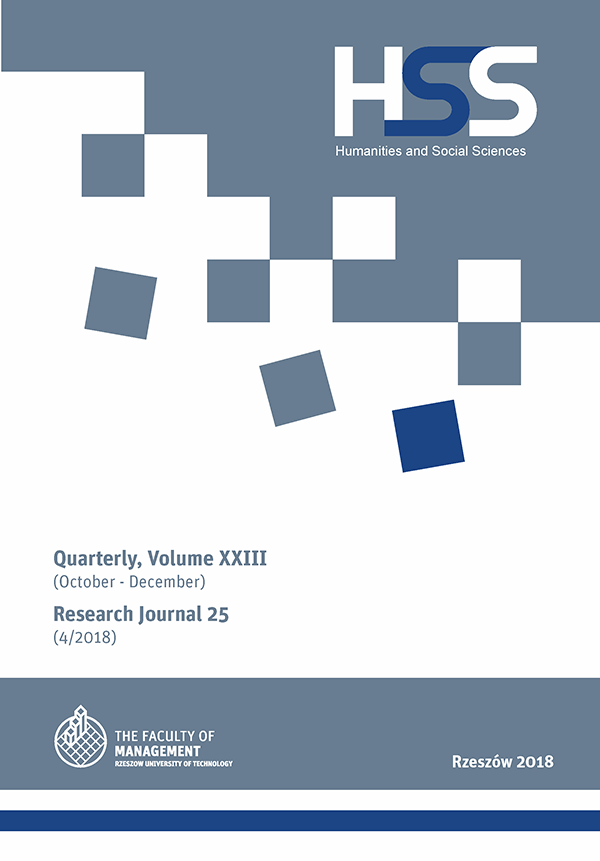Abstrakt
The objective of the paper is to examine social enterprises in terms of use of the planned Capital Market Union changes, mainly access to equity and debt instruments. Existing gap in the capital available to the social enterprises (SE) points to significant constraints in banking industry’s financing ability. The author explore the question of what potential opportunities for the development of financial instruments supporting social enterprises sectors can be created in the context of the establishment of the CMU. In the current discussion about CMU much space has been devoted to its impact on the SME sector. However, It doesn't take up the theoretical review of the likely consequences of the project for social enterprises. The analysis of available documents indicate that financing opportunities in the social enterprise sector in the result of CMU project will depend on the scale and scope of the social impact of social enterprises. The main implications of the paper contribute towards understanding how CMU project can translate into diversification and greater availability of financial sources supporting social enterprises, more effective SE funding policy design and more accurate implications forecasting for creating capital market dedicated for SE. Managers of social entrepreneurs will find the results useful for developing their business strategies, being more aware of the possible implications of CMU project.
Bibliografia
Abascal M., Alonso T., Pacheco L. (2015): First step towards a Capital Market Union, Regulation Flash, 19 February 2015, BBVA Research.
Anderson N., Brooke M., Hume M., Kürtösiova M. (2015): A European Capital Markets Union: implications for growth and stability, Bank of England Financial Stability Paper, 33.
Battle Anderson B., Dees J.G. (2006): Rhetoric, Reality, and Research: Building a Solid Foundation for the Practice of Social Entrepreneurship, In: A. Nicholls, (eds.), Social Entrepreneurship: New Models of Sustainable Social Change, Oxford University Press.
Bavoso V. (2015): High Quality Securitisation and EU Capital Markets Union - Is it Possible? Journal of Financial Perspectives, Forthcoming.
Brinkerhoff D. W., Brinkerhoff J. M. (2004): Partnerships between international donors and non-governmental development organizations: Opportunities and constraints, International Review of Administrative Sciences, 70/2.
Carney M., Gedajlovic E. (2002): The co-evolution of institutional environments and organizational strategies: The rise of family business groups in the ASEAN region, Organization Studies, 23/1.
Conner K. R., Prahalad C. K. (1996): A resource-based theory of the firm: Knowledge versus opportunism, Organization science, 7/5.
Draghi M. (2014): Keynote speech at the Eurofi Financial Forum. Frankfurt am Main: European Central Bank Directorate General Communication.
EU Commission (2014): The Juncer Comission: a strong and experienced team standing for change, IP/14/984, 10 September.
EU Commission (2015): Building a Capital Markets Union, Green Paper, 52015DC0063.
EU Commission (2016): Building a Capital Markets Union, Green Paper, 52015DC0063.
Fowler A. (2000): NGDOs as a moment in history: beyond aid to social entrepreneurship or civic innovation? Third world quarterly, 21/4.
Green Paper (2015): Building a Capital Markets Union, Brussels, COM (2015), 63 final,
Groot A., Dankbaar B. (2014): Does Social Innovation Require Social Entrepreneurship? Technology Innovation Management Review, 4/
Hamunen M. (2015): The Impact of a Capital Markets Union in Europe, CFA Institute Magazine, 26/5.
Janc A., Mikołajczak P., Waliszewski K. (2015): Europejska Unia Rynków Kapitałowych. Perspektywa finansowania przedsiębiorstw w Polsce, Wydawnictwo CeDeWu, Warszawa.Kang J. K. (1997): Why is there a home bias? An analysis of foreign portfolio equity ownership in Japan, Journal of financial economics, 46/
Kaya O. (2015): Capital Markets Union: Am ambitious goal but few quick wins, EU Monitor, Deutsche Bank Research, Frankfurt am Main.
Kornasiewicz A. (2004): Venture Capital w krajach rozwiniętych i w Polsce, Wydawnictwo CeDeWu, Warszawa.
Lannoo K. (2015): Which Union for Europe’s Capital Markets, CEPS/ECMI Policy Brief, 22.
Marcinkowska M., Wdowiński P., Flejterski S., Bukowski S., Zygierewicz M. (2014): Wpływ regulacji sektora bankowego na wzrost gospodarczy-wnioski dla Polski, Inst. Ekonomiczny.
Mikołajczak, P. (2017a): The Importance of Funding Sources to the Scale of Activity of Social Enterprises, Finanse, Rynki Finansowe, Ubezpieczenia, 4/88.
Mikołajczak P. (2017b): Źródła i instrumenty finansowego wsparcia przedsiębiorstw społecznych, Wydawnictwo UEP, Poznań.
Mikołajczak P. (2014): Struktura finansowania inwestycji małych i średnich przedsiębiorstw refundowanych z funduszy europejskich w Wielkopolsce, Humanities and Social Scencies, 3.
Mikołajczak P., Czternasty W. (2015b): Social enterprises versus globalisation, INTERCATHEDRA, 31/2.Mollick E. R. (2014): The Dynamics of Crowdfunding: Determinants of Success and Failure, Journal of Business Venturing, 29.
Pagano M., Röell A. A., Zechner J. (2002): The geography of equity listing: why do companies list abroad? The Journal of Finance, 57/6.
Popov A., Udell G. (2012): Cross-border banking, credit access, and the financial crisis, Journal of International Economics, 87/1.
Tesar L. L., Werner I. M. (1995): Home bias and high turnover, Journal of international money and finance, 14/4.
Thompson J., Alvy G., Lees A. (2000): Social entrepreneurship-a new look at the people and the potential, Management decision, 38/5.
Vacekova G., Valentinov V., Nemec J. (2017): Rethinking non-profit commercialization: the case of the Czech Republic, Voluntas, International Journal of Voluntary and Nonprofit Organizations, 28/5.
Zahara S. A., Gedajlovic E., Neubaum D. O., Shulman J. M. (2009): A typology of social entrepreneurs: Motives, search processes and ethical challenges, Journal of Business Venturing, 24/5.

